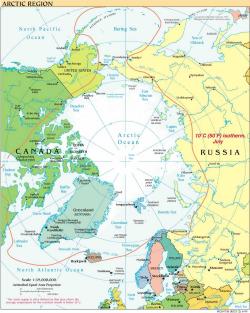|
The objective of this website is to present recent
indicators that describe the present state of the Arctic climate
and ecosystem in an accessible, understandable, and credible historical
context. A summary of changes are listed in the Table
of Indicators.
The Arctic is a vast, ice-covered ocean that is surrounded
by tree-less, frozen land, which is often covered with snow and
ice. The rigors of this harsh environment are a challenge to living,
working and performing research in the Arctic. None the less, the
Arctic is an ecosystem that teems with life including organisms
living in the ice, fish and marine mammals living in the sea, birds,
land animals such as wolves, caribou and polar bears, and human
societies.
The Arctic has been changing in the last 30 years,
as noted throughout this website. Some of the clearest indicators
of this change are shown below: the warming of spring temperatures
in Alaska, the warming of winter temperatures in N Europe, the
loss of sea ice area in the central Arctic, and the conversion of
tundra to wetlands and shrub lands in E. Siberia and NW Canada and
Alaska. These changes in physical conditions also have impacted
marine and terrestrial
ecosystems. To see more details, click on the topics in the navigation
panel on the left.
|

|



